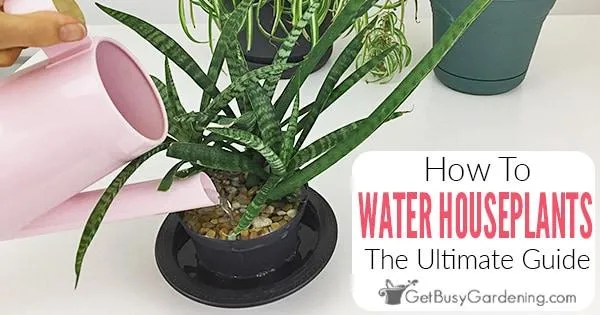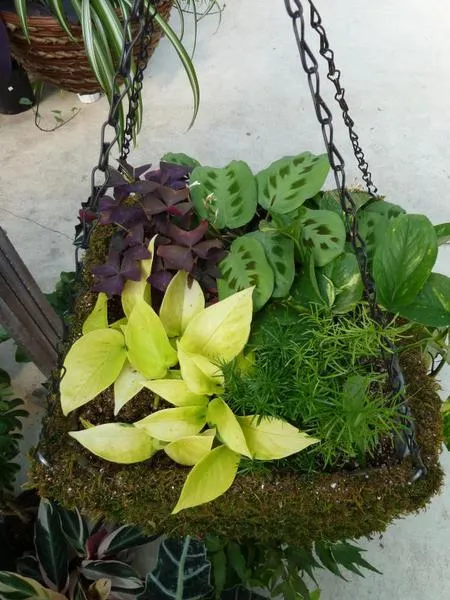
How to Properly Water Hanging Plants Indoors – Tips for Watering Indoor Hanging Plants
A Complete Guide to Watering Hanging Plants Indoors
If you’re looking to add some greenery to your home but don’t have floor space for plant pots, hanging baskets are a great solution. Hanging plants can spruce up any indoor area from above window sills and shelves to hanging from the ceiling. However, watering hanging plants properly requires some adjustments compared to potted plants on the ground. In this comprehensive guide, I’ll cover all the basics of watering hanging plants indoors, from schedule to technique, so you can keep your hanging greenery happy and healthy.
Understanding Water Needs
The first step is understanding the specific water needs of the plants you’ve selected. Most common houseplants for hanging baskets like pothos, philodendron, English ivy, spider plants and ferns prefer to stay moist but not soggy. They’ll want water whenever the top inch or two of soil is dry. Some plants like succulents and air plants need less frequent watering, as little as once a week. No matter the variety, check soil moisture regularly by sticking your finger an inch into the soil or lifting the pot. This will prevent over or underwatering.
Choosing a Watering Method
For hanging baskets, you have a few options when it comes to delivering water:
- Water from below by placing the entire hanging basket in a tub of water and letting it soak for 10-15 minutes until the soil is saturated. This ensures even water distribution. However, it can be messy!
- Water from above by using a watering can with a narrow spout or a watering bottle. This allows you to target the soil while avoiding wetting the foliage. It takes some practice to water efficiently without spilling. I find watering bottles easiest for tight spaces.
- Self-watering options like automatic water globes or wicks that draw water up from a reservoir are handy for vacations or those prone to forgetting. But they require refilling the reservoir frequently.
Timing Your Watering
When it comes to timing hanging plant watering, early morning or late afternoon is best. This gives plant foliage time to dry before dark when conditions are ideal for disease development. Avoid watering at midday when sunlight is strongest and water can evaporate before being absorbed. It’s also inadvisable to water plants right before bringing them inside, to prevent dripping indoors. From my experience, it’s easiest to stick to a weekly schedule so you don’t forget.
Avoiding Common Watering Mistakes
Some mistakes to watch out for include:
- Overwatering, which can cause root rot. Always check soil moisture first before watering.
- Underwatering, leading to droopy, stunted growth. Don’t skip watering just because it’s not visibly dry.
- Allowing water to pool in the saucer or cache pot. Remove excess water after 10 minutes to prevent root rot from soggy soil.
- Misting foliage, which provides little benefit and can promote disease. Target water only to the soil surface.
- Letting mineral-rich tap water sit in the saucer and reabsorb into the soil, potentially burning roots over time.
With practice, you’ll find the sweet spot for each of your hanging basket varieties. And don’t sweat the occasional dry or soggy day – plants are resilient little buggers!
Dealing With Special Cases
Certain hanging planter styles require extra watering considerations:

Top-Heavy Basket Plans Like Ferns
Top-heavy baskets need extra water, as their soil dries out quickly. In my experience, twice-weekly watering is usually sufficient. Top-dressing the soil with moss also helps retain moisture.
Mesh/Linen Hanging Planters
These breathable materials dry out soil faster than ceramic or plastic. Check soil daily and water more frequently, around every 3 days. Self-watering options are ideal here.
Hanging Herb Gardens
Herbs want excellently draining soil that dries quickly, so water just once the top inch is dry – usually every 5-7 days. Overwatering can damage delicate herb roots and foliage.
With some trial and error to understand the water needs specific to your plants and planters, you’ll be a pro at keeping your indoor hanging gardens hydrated and lush!
Handling Special Situations
From time to time, you may face unique challenges that require watering adjustments, like:
Low-Humidity Environments
If indoor air is dry, hanging plants may dry out extra fast. Check soil twice as often and mist foliage sometimes for humidity-loving varieties like ferns. Pebble trays or a humidifier can also help.
Bright, Sunny Windows
Plants drying in strong light may need water every 3-4 days. Move them slightly farther if foliage is starting to burn.

Patio Hanging Baskets
Outdoor plants exposed to sun, rain and wind require daily monitoring and watering more than twice a week during hot/dry spells.
Signs of Under or Overwatering
Familiarize yourself with drought and overwatering symptoms so you can make corrections in time: wilted, brittle or yellow leaves mean dry out, and soggy soil or brown tips/edges signal too much water.
With some attentiveness to your hanging plants’ unique conditions and needs, you’ll be successfully keeping them lush and happy indoors long-term!
Frequently Asked Watering Questions
Here are answers to some additional common hanging planter watering queries:
Do I need to water hanging baskets if it rains?
It depends on the intensity and duration of the rainfall. Light rain may not fully saturate the soil. Check moisture levels and water if top inch is dry.
Can I leave for a week without watering?
Most hanging plants can go 5-7 days without water depending on conditions. For longer trips, use a self-watering system or have someone care for them.
How do I know if a plant needs a drink?
Aside from checking soil moisture, watch for signs like wilting, drooping or brown leaf edges/tips indicating thirst.

Can overwatering kill a plant?
Yes, too much water is just as bad as not enough! Overly soggy soil can lead to root rot which starves the plant.
I hope these tips have covered all the ins and outs of keeping your hanging indoor plants properly hydrated to thrive! Let me know if any other watering questions come up.
Tips for Watering Hanging Plants Indoors
| Type of Plant | Watering Frequency | Signs it Needs Water | Watering Amount |
|---|---|---|---|
| Succulents | Every 2-4 weeks | Soil is dry 1 inch deep | Water thoroughly until water drains from bottom |
| Ferns | Every 5-7 days | Top soil feels dry | Water until soil is moist 1-2 inches deep |
| Philodendrons | Every 7-10 days | Top inch of soil is dry | Water until water drains from bottom |
| Pothos | Every 10-14 days | Top soil feels dry | Water until soil is moist 1-2 inches deep |
| Spider Plants | Every 7-10 days | Top soil feels dry | Water until soil is moist 1-2 inches deep |
FAQ
-
How often should I water hanging plants?
Hanging plants usually need watering about once a week. Basically, you’ll want to water them whenever the top 1-2 inches of soil becomes dry. At the same time, the exact schedule can sort of vary depending on factors like sunlight, temperature, and the specific plant.
-
Should I water from above or below for hanging plants?
Most experts recommend watering hanging plants from below. See, when you water from above, excess water can collect around the plant’s crown and cause root rot. On the other hand, watering from below allows the water to be absorbed more slowly and thoroughly by the soil. You can use a tray or saucer under the plant to catch the drained water.
-
How much water should I give each time?
As a general rule, you’ll want to water hanging plants thoroughly until water drains out the bottom of the pot. Nevertheless, the amount can differ based on the plant’s size. Basically, smaller pots will need less water while larger pots may need more. Another factor is the water-retention ability of the potting mix – cactus mixes need less water compared to organic mixes. Always check the drainage holes to avoid overwatering.
-
Is it okay to let the saucer dry out?
Yes, it’s perfectly fine to let excess water drain out of the saucer and let it dry out between waterings. In fact, allowing the saucer to dry out helps prevent root rot that can occur if the roots are left sitting in water for long. However, be sure not to let the potting mix become completely dry either. Maybe check the saucer and soil moisture daily to find the right balance.
-
What if I forget to water for a while?
Although it’s best to keep up a regular watering schedule, we all forget sometimes! If you notice your hanging plant drooping or the soil is bone dry, don’t panic. Give it a thorough watering and place in indirect light for a few days. Most hanging plants can bounce back from short periods of under-watering. Still, it’s safer not to let them dry out for longer than 3-4 days, if possible.

-
Any tips on watering large hanging baskets?
Watering huge hanging baskets can be a real workout for your arms! As the saying goes – where there’s a will, there’s a way. A few ideas are using a watering can with a long spout, investing in a watering wand attachment or considering a self-watering system. Some gardeners suggest removing large baskets for watering. But is that fair to your poor back? Perhaps try dividing the basket to make it lighter first.